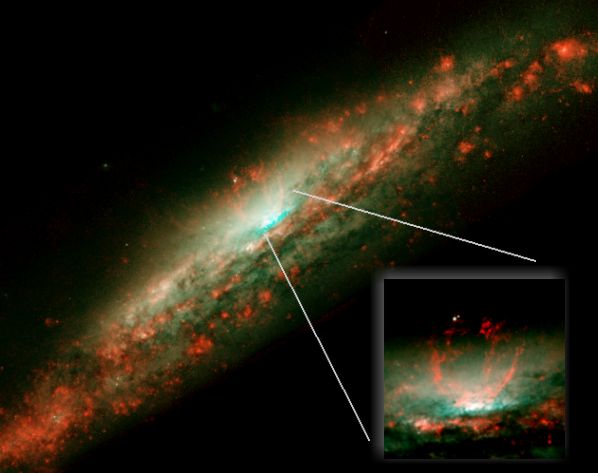The Bubbling Cauldron of NGC 3079

Explanation:
Edge-on
spiral galaxy NGC 3079 is a mere 50 million light-years away
toward the constellation Ursa Major.
Shown in this
stunning false-color
Hubble Space Telescope
image, the galaxy's disk - composed of spectacular
star clusters in winding spiral arms and dramatic
dark lanes of dust -
spans
some 70,000 light-years.
Still,
NGC 3079's most eye-catching features are the pillars of gas
which tower above a swirling cosmic cauldron of activity
at the galaxy's center.
Seen in the close-up inset at lower right, the pillars rise to a
height of about 2,000 light-years and seem to lie on the surface
of an immense bubble rising from the galactic core.
Measurements indicate that the gaseous pillars are streaming away
from the core at 6 million kilometers per hour.
What makes this galaxy's
cauldron bubble?
Astronomers
are exploring the
possibility that the
superbubble is
formed
by winds from massive stars.
If so, these massive stars were likely born all at once as the
galactic center underwent a
sudden burst of star formation.
Authors & editors:
Robert Nemiroff
(MTU) &
Jerry Bonnell
(USRA)
NASA Web Site Statements, Warnings,
and Disclaimers
NASA Official: Jay Norris.
Specific
rights apply.
A service of:
LHEA at
NASA /
GSFC
& Michigan Tech. U.

